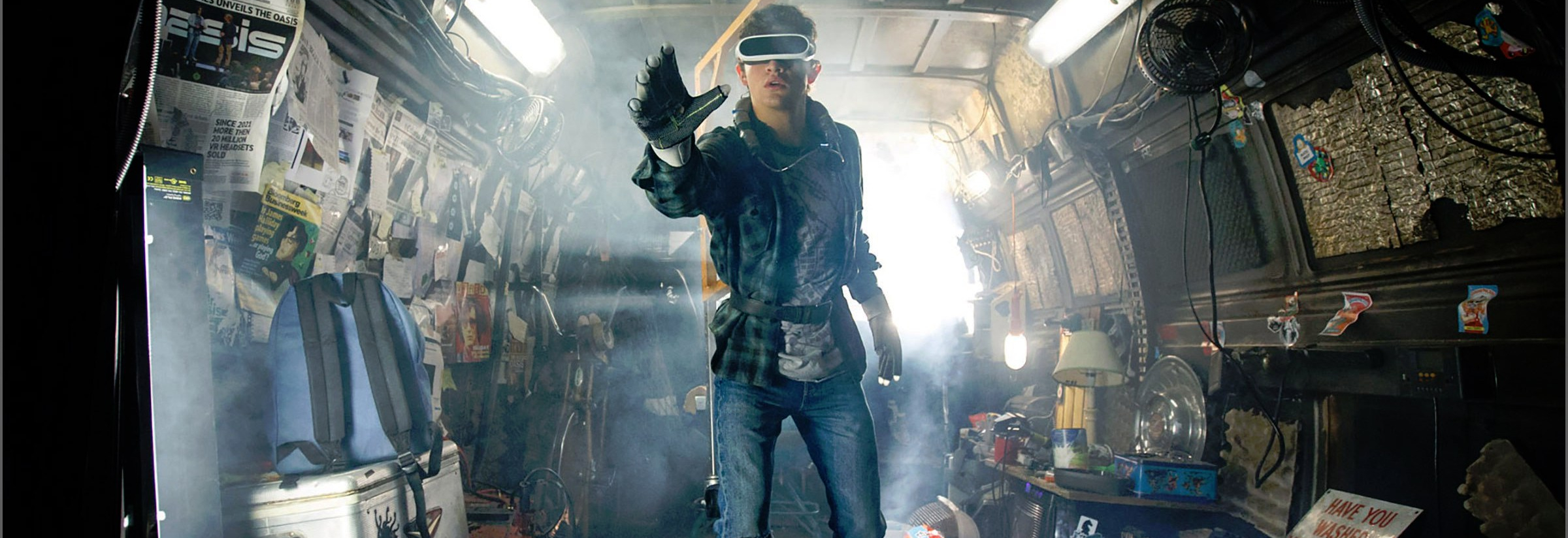Ready Player One: When You Know Too Much

In these next two posts, we’re going to be looking at an aspect crucial to world-building that doesn’t always get the attention it deserves, or it gets too much, and both of those are dangerous. I’m talking about the info dump. There is a fine line between giving too much and not giving enough, and right there in the center is the sweet spot of world exposition.
Today we’re going to be looking at the dangers of too much world-building through the novel Ready Player One. Let’s log in to the OASIS and see what’s going on.
If you’re unfamiliar with Ready Player One by Ernest Cline, the year is 2045 and the world’s turned to shit. Most people now spend most of their time logged into a virtual reality universe called the OASIS, where people can go to school, work, or play as they want. When the creator of the OASIS, Halliday, died, he leaves an Easter Egg in the OASIS that, when found, will grant the winner his entire fortune. The novel follows Wade Watts in his search for the Easter Egg.
Part of the premise of the hunt for the Easter Egg, is that in order to find it you need to know about everything Halliday and the things he loved. And Halliday had obsessive love for everything geeky in the 70s. As would be expected, Wade subsequently also has an obsessive knowledge of these things, and that is the failure of an otherwise enjoyable book.
The Danger of the Info Dump
The info dump is a basically tightrope the author walks, because when you’ve created a world that doesn’t match reality or doesn’t follow the rules as the reader knows them, then you have to inform the reader how this world works. Too little information and the reader gets confused, but the info dump can also be distracting if too much information is given all together at the expense of moving the plot forward.
The best option is to create smaller info dumps spread throughout the book/series. This way you can introduce information necessary without overwhelming the reader. If the information can be integrated into dialogue or other primary plot events, that’s the best way to avoid pulling the reader out of the story in order to explain the world.
That is the goal when giving information. Make it a part of the story, not an addition.
 Ready Player One: Knowing the Difference
Ready Player One: Knowing the Difference
Perhaps the hardest part of world building is knowing the difference between what the author needs to know in order to create a consistent and fleshed-out world and what the readers need to know in order to understand that world. That determines how much information needs to be in the story and how you present it.
Sadly, Ready Player One doesn’t know the difference. Everything about this world is presented to the reader is extreme detail, and the beginning of the book suffers for it. When I recommend someone read it, I always make sure to warn them that the beginning is very slow but it gets much better once the action starts. And it does. It just takes far too long for the action to start.
The book begins with the reader being told that Wade is the first person to get the first key to the Easter Egg hunt, but then the reader is put through several chapters of almost pure world-building. So much so that I honestly wondered at one point when I’d get to see Wade actually finding the key that we were told about in the opening of the book.
A great deal of the information in these chapters is important—to the author. It is not as important to the reader. Is it interesting? To an extent, but when it blocks the progression of the story, it’s not necessary to the reader.
What is necessary could have been better told throughout the novel instead of all together at the beginning in one big info dump. Not just because it slows the beginning of the novel—a vital area to catch the reader’s attention—but also because it makes it harder for the reader to remember the parts they need to know. I found myself several times trying to remember a single fact or reference mentioned early on that has suddenly become relevant to the plot.
Ready Player One could have benefited from one early reader who said, “I don’t need to know this.” This is where a good writing group or editor comes into play, because the author does need to know this information. It’s creates the world the characters live in and determines how they interact with it, but don’t let that interfere with the story you’re trying to tell your readers.


Pingback: The Last Guardian: A Hollow World – The Woman in the Red Room
Pingback: The Last Guardian: A Hollow World – Your new super fast WordPress site.